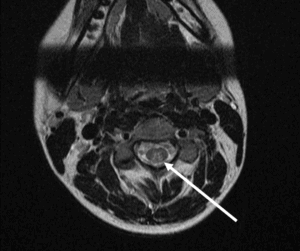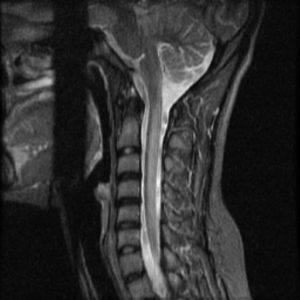 ‘Nanging’ is the recreational use of nitrous oxide. That cylinder you have in your emergency department and use for some uncomfortable procedures, especially on children…..that nitrous is now being abused on the street, with some disastrous consequences. It’s nothing new. It’s been going on for some time. However recently, there has been a startling growth in its use.
‘Nanging’ is the recreational use of nitrous oxide. That cylinder you have in your emergency department and use for some uncomfortable procedures, especially on children…..that nitrous is now being abused on the street, with some disastrous consequences. It’s nothing new. It’s been going on for some time. However recently, there has been a startling growth in its use.
The nitrous bulbs are known as ‘whippets’ or ‘hippy crack’. They’re cheap and readily available. This combination makes nitrous an easy drug to abuse. The prolonged recreational use, can have severe neurological sequelae, secondary to functional inactivation of vitamin B12.
Nitrous oxide was first synthesised in 1772 and its anaesthetic properties discovered soon after. It has long been a recreational drug, initially misused by the medical and dental professions.
It’s use as the aerosol charger in simple cream canisters(‘whippets’), makes it easily accessible. It is usually discharged into a balloon and inhaled. Each aerosol container has about 8g of 100% nitrous oxide.
The prolonged use of nitrous, causes a deactivation of Vitamin B12 resulting in central and peripheral nervous system demyelination and can lead to subacute combined degeneration of the spinal cord.
It may be difficult to get the diagnosis as patients may not be forthcoming with the history of nitrous abuse. The fact that it may be a progressive neurological worsening can confuse us to thinking it is Guillain-Barre syndrome.
CASE(1)
A 27-year-old man presented to the emergency department with a 6-week history of increasing bilateral lower limb weakness. He had a psychiatric history of depression and self harm. He had allergies to paracetamol and opiates. His only other history, is of recurrent patellar dislocation for which he has attended the emergency department regularly.
His examination showed flaccid muscle tone and symmetrical weakness of upper and lower limbs with glove and stocking sensory loss. Nerve conduction studies demonstrated a primary demyelinating neuropathy with additional axonal loss. Bloods were essentially normal at this time, but he had received a Bit B12 injection by his LMO the day before.
At this time he was discharged to rehab, but presented 6 months later with a sudden, severe areflexic flaccid paraparesis but with no upper motor neurone signs. His serum vitamin B12 was low. He admitted to repeatedly dislocating his patella to receive nitrous at hospital. He had returned to high dose use of nitrous as a recreational drug when he had left the hospital.
Nerve biopsy showed large myelinated fibre loss and an MR scan of the brain and spinal cord showed extensive white matter change in both cerebral hemispheres.
He was immediately admitted and started on high dose B12, however he remains a paraplegic.
CLINICAL
The most prominent clinical sign are neurological (2-5)
Neurological
Patients may present with sensory loss and weakness of the limbs. This is progressive. They may simply present with increasing falls. Myelopathy affecting the dorsal columns results in a subacute combined degeneration of the spinal cord.
Clinical examination may show a loss of proprioception and diminished vibration sense. There may also be a positive Rhomberg sign.
Psychiatric
Patients can present with depression and hallucinations
Haematological
A reduction in terahydrofolate can cause bone marrow suppression and these patient can present with with an anaemia and low white cell count.
Respiratory
It can also cause acute respiratory distress and even pneumothoraces.
Investigations
Laboratory (2-5)
- FBC
- Electrolytes
- Vit B12- remember that this may be normal. Although nitrous oxide inhibits B12 activation it does not reduce B12 levels
- Homocysteine levels will be elevated as Vitamin B12 is a substrate for methionine synthase in the production of methionine. In these patients it is not active.
- Methylmalonic acid levels will be increased.
Imaging
MRI: A thoracic hyperintense signal in the dorsal columns. It is called the ‘inverted V sign’.(6)

Case courtesy of Dr Nafisa Shakir Batta, Radiopaedia.org. From the case rID: 29761

https://pubmed.ncbi.nlm.nih.gov/20605391/
Management
- Cease the use of nitrous oxide
- Give Vitamin B12(Hydroxycobalamin) 1mg IM daily for 2 weeks, then extend to weekly and then monthly doses.
- Methionine 1g TDS orally for 2 weeks
- Folinic acid 30mg IV if any evidence of marrow suppression.
References
- Thompson, A et al. Whippits,nitrous oxide and the dangers of legal highs.Pract Neurol. 2015 Jun; 15(3): 207–209.
- Becker T et al. Just Nanging Around. ACEM Website
- Shoults K. Case report: Neurological Complications of Nitrous Oxide Abuse. BCMJ, vol. 58 , No. 4 , May 2016 , Pages 192-194
- Austin Clinical Guidelines
- Alt R et al. Severe myeloneuropathy from acute high-dose nitrous oxide (N2O) abuse. J Emerg Med 2011;41:378-380.
- Case courtesy of Dr Nafisa Shakir Batta, Radiopaedia.org, rID: 29761
For a little bit extra, watch this short lecture titled Poppers and Whippets by Dr James Edwards











I’ve Got this ‘Nanging’ feeling: Nitrous Oxide Abuse – Resus
[url=http://www.ga3648eprd62718dcyfq1a5540fx14bas.org/]utzfhezfj[/url]
atzfhezfj
tzfhezfj http://www.ga3648eprd62718dcyfq1a5540fx14bas.org/
Bacteria Spreader
Gluing Spreader
ブランドコピー専門店
コピー時計
140 Amp Mig Welder
Pure Zinc Oxide Powder Feed Grade
ブランドコピー代引き
Epoxy Polyester Powder Coatings
Ceramic Brake Pad
ブランドバッグコピー
Plug In Electric Powered Four Wheels Vehicle Car
wood shisha